I walk the meadow and look. Dogbane beetles drive their shiny little cars over the leaves of their namesake plant. Every time I walk by there is less plant.
 I wonder how it feels to be reflective in this very concrete way. Maybe the beetles wonder how it feels to think so much about everything, all the time. Perhaps we should switch places. But I would miss my supple skin. However iridescent and beautifuly polished an exoskeleton might be, I still think it would feel like I was in a car.
I wonder how it feels to be reflective in this very concrete way. Maybe the beetles wonder how it feels to think so much about everything, all the time. Perhaps we should switch places. But I would miss my supple skin. However iridescent and beautifuly polished an exoskeleton might be, I still think it would feel like I was in a car.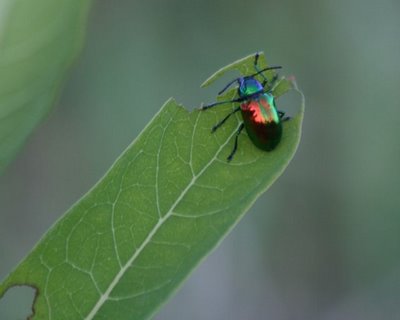
Smooth sumac raises proud seedheads to the sky, food for birds come frost. But what's this on the undersides of its leaves?
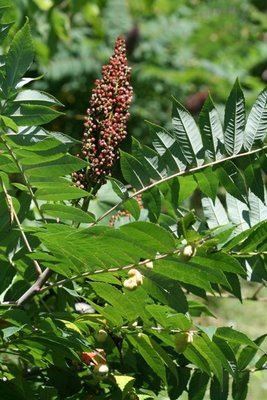
Great hollow lumps cling along the stem, obviously of the plant's making.
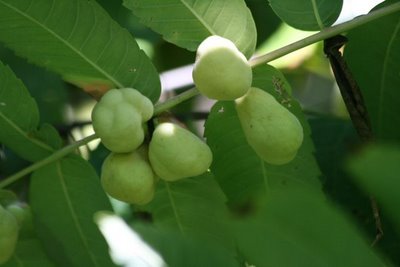 Yes, but why would a plant make something like this? I break one open, to find it filled with small yellow aphids.
Yes, but why would a plant make something like this? I break one open, to find it filled with small yellow aphids.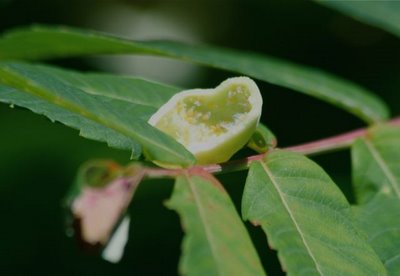
Which came first, bolus or bugs? They're sumac gall aphids, and I can't find anything about how this comes to happen--how these tiny, soft-bodied insects came to be in such a perfect hollow biosphere. I conclude that their mother must have laid eggs in the sumac leaf, and the sumac responded to the insult by creating a lovely capsule around the irritant. I don't know if I'm right, but perhaps the sumac gall aphid would follow the path of gall-making wasps and beetles, chemically co-opting the plant's growth potential into a sort of induced cancer that both feeds and protects its young. Some aphids are parthenogenic, too, and a single female can give birth to a whole raft of exact copies of herself without benefit of fertilization. So the possibility that a single female made her way in, then popped out a bunch of young, must be considered as well.
However the aphid colony came to be here, they're happily sucking plant juices, protected from predators, ironically enough, by the very plant whose energy they're sapping. There's a sociopolitical analogy in here somewhere, but I'm going to stick to bugs.
I draw back, walk on, and look at the evening sun slanting through winged sumac leaves.
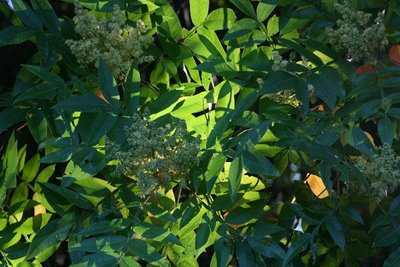 Oh, it's beautiful. Why does low golden light, cricket music rising as night falls, raise such a lump in my throat?
Oh, it's beautiful. Why does low golden light, cricket music rising as night falls, raise such a lump in my throat?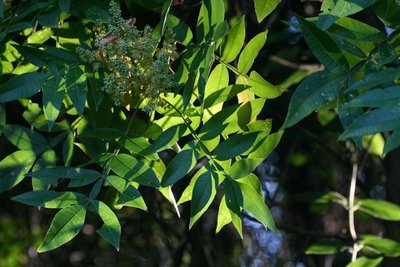
Young tulips, mown off only last summer, madly put forth new growth in September, trying to get too big for the mowing deck.
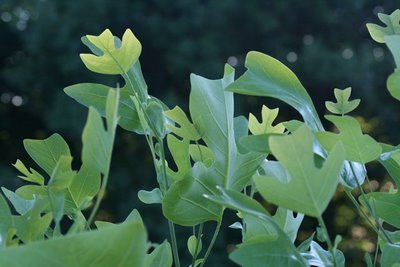 A few more seasons of neglect, and saplings will be trees, and this golden meadow will be dark woods.
A few more seasons of neglect, and saplings will be trees, and this golden meadow will be dark woods.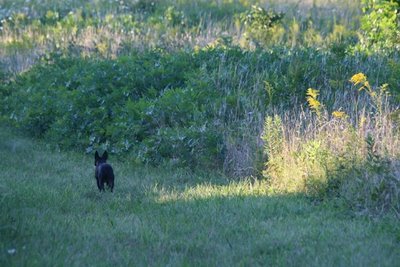






5 comments:
Iridescent car/skins, sumac pods and lovely young tulips -- fall, indeed.
I've been trying to reflect like you are now...observing the tiniest hints of an ending summer on the undersides of tired leaves. It's all good, as I'm ready for the next season.
Beautiful, wonderful post and photos. Put me in a mood.
I spent part of the evening driving about with my daughter looking for a field of goldenrod. Molly is doing a paper and field study on goldenrod gall flies for 10th grade AP biology. I learned that the larvae overwinter in the brown goldenrod gall. They produce a chemical simlar to anti-freeze which keeps them from dying in the cold. It's an amazing and wonderful thing when I learn new things from my kids.
As for the season change, I'll say it again, I love it.
I'm ready too for the next season, and vow to try and not whine when I long for the warm sun again. For now, I have had quite enough baking. Interesting about the sumac. Nature seems to have thing figured out much better than we do, hey? ;c)
Jayne,
Let's stick to bugs and birds, shall we? Let's!
= - p
Lynne,
Look with Molly for the downy woodpeckers (mostly male) who hammer into those galls come winter and slurp up those antifreeze-filled treats. Male downies tend to forage on thinner-diameter branches, while females take the trunks and large branches.That's how they split up the habitat. So goldenrod stems definitely qualify as thin branches! And I love learning new things, too. Part of the grand surprise of having kids.
Mare, Trix, aren't we always in a mood?
Post a Comment